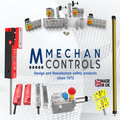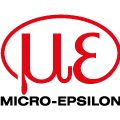
Posted to News on 21st Sep 2011, 09:37
BS EN ISO 23125, the turning machine (lathe) safety standard
BS EN ISO 23125:2010 is the safety standard for turning machines (lathes). Jon Severn, Editor of MachineBuilding.net, reviews the standard to see what it contains and how it might help machine builders.
British standard BS EN ISO 23125:2010, Machine tools - Safety - Turning machines, is published by BSI as the British standard equivalent of international Type C standard ISO 23125 and European Standard EN ISO 23125, which is harmonised to the Machinery Directive 2006/42/EC and, therefore, provides a presumption of conformity to certain Essential Health and Safety Requirements stated in the Directive. BS EN ISO 23125:2010 supersedes BS EN 12415:2001, BS EN 12478:2001, BS EN 12840:2001 and BS EN 13788:200, all of which have been withdrawn.
The standard for the safety of turning machines covers four groups of turning machines and turning centres (and lathes) as follows:
- Group 1 - Manually controlled turning machines without numerical control
- Group 2 - Manually controlled turning machines with limited numerically controlled capability
- Group 3 - Numerically controlled turning machines and turning centres
- Group 4 - Single- or multi-spindle automatic turning machines
Groups 1, 2 and 3 are further sub-divided into 'large' and 'small' in Table 1 of Clause 3, Terms and definitions. Descriptions and annotated line drawings of various types are turning machine are included later in Clause 3.
In addition, BS EN ISO 23125 applies to ancillary devices that are integral to the machine, such as for workpieces, tools and work clamping devices, handling devices and chip handling equipment. Although the standard states that it does not relate to machines manufactured prior to the date of its publication, companies that remanufacture turning machines or upgrade machines by, for example, retrofitting CNC controls, should note that such actions may require the machine to be CE marked in accordance with the Machinery Directive 2006/42/EC, in which case compliance with the relevant harmonised standards - including EN ISO 23125 - may be necessary.
Anyone using BS EN 23125 should also look closely at Clause 2, Normative references, which runs to approximately three pages and lists over 50 other standards that are cited and may therefore need to be consulted.
Hazards and safety measures
For machine designers, one of the most useful Clauses of BS EN ISO 23125 is Clause 4, List of significant hazards, which tabulates the hazards and provides information for each under the following headings:
- Hazards, hazardous situations and hazardous events
- Situations on turning machines
- Cross-references to ISO 12100-1:2003 and ISO 12100-2:2003 [now superseded by ISO 12100:2010 - Ed]
- Relevant Type B standard
- Relevant Clause in ISO 23125
Apart from a handful of cases, the references in the last column relate to sub-clauses in Clause 5, Safety requirements and/or measures. Clause 5 runs to over 20 pages and contains a wealth of useful, detailed information. Sub-clause 5.16, Verification of the safety requirements and/or protective measures, provides a helpful table of verification methods, so readers can see whether to use visual inspection, functional test, measurement, calculation or documentation.
Clause 6, Information for use, covers marking and instructions for the machine itself and other associated parts - such as tooling, workpiece handling and ancillary handling devices.
In addition to the main body of BS EN ISO 23125, there are several annexes. Annex A, which is normative rather than informative, describes an impact test method for guards on turning machine. Annex B, which is informative only, describes equipment for performing impact tests. Annex C, also informative, shows how to calculate the direct impact energy. Annex D (informative) gives an example check list for safety functions, with the aim of explaining the relationship between parts of a particular machine and the safety concepts involved. Annex E (informative) gives examples of exhaust and extinguishing systems; this is important because coolants with more than 15 per cent oil content can cause a risk of fire or explosion. Annex F (informative) shows how to determine the performance level (PL) for an interlocked guard in line with ISO 13849-1. Annex ZA states the relationship between the European standard and the new Machinery Directive 2006/42/EC.
BS EN ISO 23125:2010, ISBN 978 0 580 52983 2, is available from BSI as a PDF or hard copy priced 196 (or 98 for Members of BSI). Follow the link to see more about BS EN ISO 23125:2010.
BSI (British Standards Institution)
389 Chiswick High Road
W4 4AL
UNITED KINGDOM
+44 (0)20 8996 9001

















